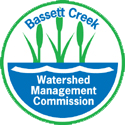News
What is your eco-yard IQ?
Tue, May 4, 2021What is your eco-yard IQ?
The Bassett Creek Watershed Management Commission realizes that our actions on land—even in our yards—are connected to the health of our waters. How do you score on this short quiz?
1. What should people do with their fall leaves?
A. Leave the leaves
B. Rake them out of streets
C. Compost the leaves
D. Both and A. and B.
E. None of the above.
Answer: D. It is now recommended to “leave the leaves,” because they provide critical insect habitat. While monarch migration is a well-known phenomenon, it’s unusual. Most insects overwinter in the landscape and use leaf litter for winter cover. At the end of summer, many insects burrow an inch or two into the earth to hibernate for winter. An extra thick layer of leaves provides extra insulation. Also, there are many critters that live in leaves and support the rest of the food chain. It’s easy to see the importance of leaves in sustaining the natural web of life.
To mimic natural ecosystems, a layer of leaves needs to be at least a couple of inches thick. While this would be too much of a good thing for lawn grass to handle, research has shown that lawns actually benefit from a thin layer of leaves. And the rest can be piled up around ornamental trees, shrubs, and in perennial garden beds in the fall. Around mid-May, remove leaves covering plants. Some of these leaves may need to be composted.
2. True or False? Although raingardens are a cost-effective way to filter out pollutants from stormwater runoff and keep area waters clean, they breed mosquitoes.
False. Correctly designed raingardens drain within 48 hours and it takes 5 days for mosquito larva to hatch. Rain gardens are strategically placed to intercept runoff and designed to temporarily hold and soak in rain water runoff. Rain gardens are effective in removing up to 90% of nutrients and chemicals and up to 80% of sediment (dirt) from the rainwater runoff. Although called “rain” gardens, they are actually dry most of the time and are built to drain within a few days to prevent them from breeding mosquitoes. To ensure proper drainage, soils are typically amended with compost and sand.
3. True or False? Dandelions are great pollinator food!
False. Dandelions offer low-quality food—kind of like fast food of the plant world. In the early spring, pollinators flock to dandelions, mainly because it is the only flowering plant available, not because the nutrition is superior. While dandelions may be saving some pollinators from starvation and shouldn’t be sprayed, they do not offer the high-quality nutrition of native plants. Native plants, purchased in specialty garden centers, are preferred over dandelions and cultivated varieties, or “cultivars.”
4. How can an individual help pollinators?
A. Plant native plants
B. Leave some soil bare
C. Put up a bee “hotel”
D. All of the above
Answer: D. All of the above. Native plants (aka “wildflowers”) offer higher-quality nectar and pollen. A garden that blooms from late April to October not only looks gorgeous, but offers food to pollinators all growing season long. Native plants also provide other basic needs like shelter and a space to raise young.
Leaving some soil bare so bees can access it is often overlooked. Since 60-70% of the 400+ native Minnesota bee species nest in soil, it is important to avoid the temptation to mulch every square inch of your garden. You can also leave leaf litter in inconspicuous places to provide habitat for beneficial insects.
Bee “hotels” with different sized nesting holes provide homes for many different types of bees. It should be noted that the best nesting places can be cleaned out at the end of each growing season.
5. Why are bamboo nesting tubes, plastic straws, and drilled blocks less desirable for hole-nesting native bees, such as mason bees?
Since there are over 130 species of hole-nesting bees in North America, a range of nesting tubes that are six inches long and 1/8-5/8 inches wide accommodates a wide variety of bee species. However, as putting up bee hotels is catching on, it’s important to have nesting tubes that can be opened up and cleaned out to minimize diseases that can wipe out entire populations. Bamboo nesting tubes, plastic straws, and drilled blocks cannot be opened and cleaned and might harbor diseases, such as a fungal spore called “chalkbrood.”
6. True or False? Lawn irrigation is roughly half of the typical residential water use.
True. Water is our most precious resource and many areas are depleting deep aquifers faster than they can be recharged according to the U.S. Geological Survey Groundwater Decine and Depletion report.
Water-saving practices include maintaining a smaller lawn, installing alternative lawns (i.e. fine fescues with longer roots), and planting more native plants that don’t require watering. If irrigation is needed, a system with rain sensors and timers is important.Water-saving practices include maintaining a smaller lawn, installing alternative lawns (i.e. fine fescues with longer roots), and planting more native plants that don’t require watering. If irrigation is needed, a system with rain sensors and timers is important.
Bassett Creek Watershed Management Commission is a local unit of government focused on protecting water comprised of the nine cities that drain to Bassett Creek. BCWMC is a member of the West Metro Water Alliance. www.bassettcreekwmo.org.

